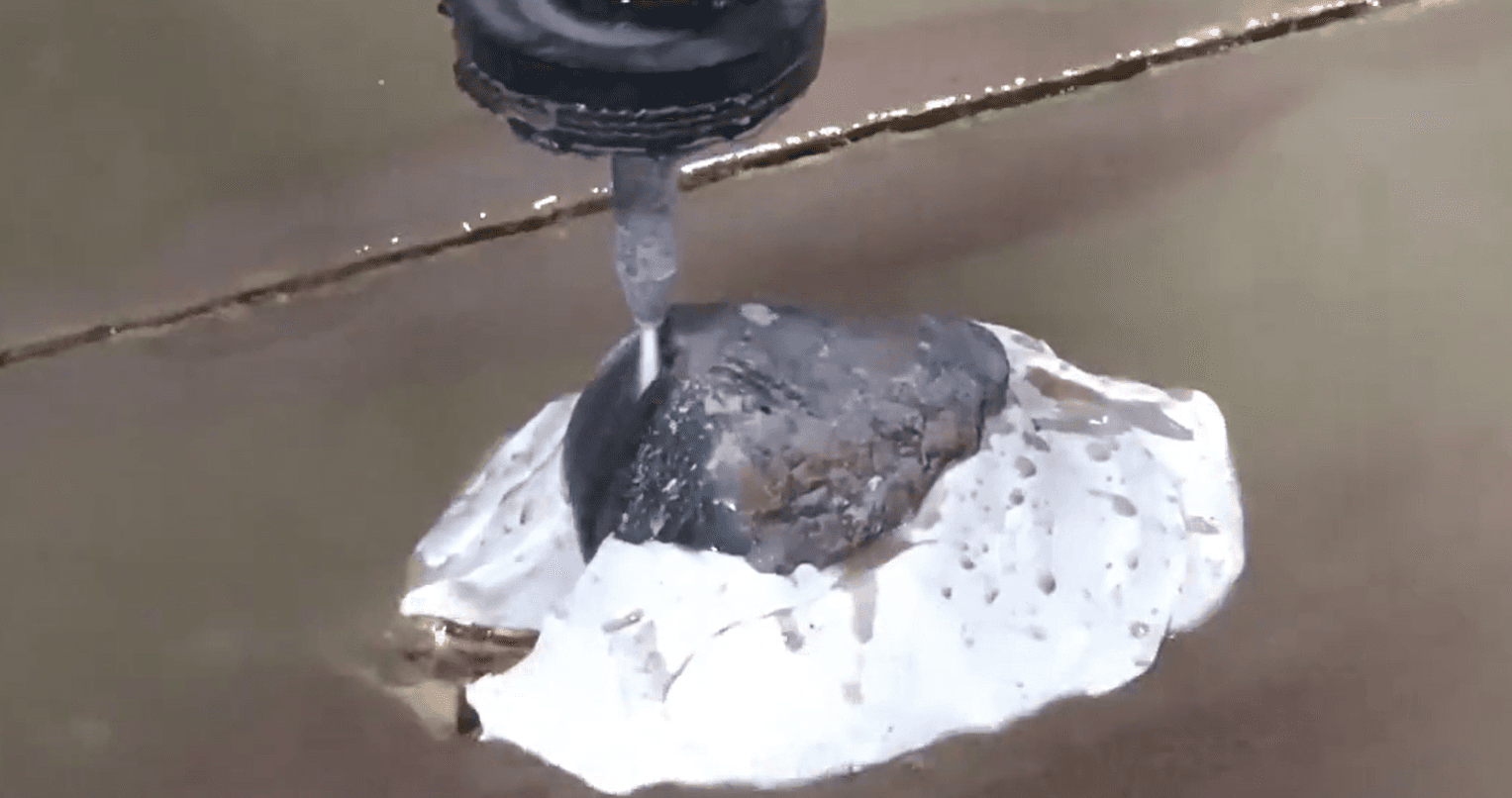Do You Know the Cost of Cutting Sapphire with a Waterjet?
Steven
In the realm of precision cutting, waterjet technology is celebrated for its capability to manage an array of hard materials. However, when it comes to slicing through high-hardness gemstones such as sapphire, the cost and the complexity of the procedure become a central concern. This article will unravel the expenses and subtleties associated with utilizing a waterjet to cut sapphire.
Let's debunk a prevalent myth: sapphires are not just regular pebbles. Boasting a Mohs hardness of 9, sapphires are virtually indestructible after diamond, marking them as one of the most rigid materials on our planet. This level of hardness presents a formidable challenge for cutting technologies.
The strategy for cutting this sapphire involves initiating the slice from its gleaming face, extending along its length. To ensure steadfastness during the cutting process, the sapphire is anchored with a daub of clay. Based on our estimations, the expense of a 34-minute cut clocks in at approximately $72. This figure encompasses utility fees, apparatus depreciation, abrasive costs, and labor charges.
When it comes to the choice of abrasive, garnet was our pick, a material grading an 8 on the hardness scale. Despite garnet's inferior hardness compared to sapphire, it can facilitate the cutting of sapphire with the bolstering force of high-pressure water. While a 17-inch stretch of timber might require 360 pounds of abrasive, a two-inch stretch of sapphire would likely necessitate about 45 pounds of garnet. By tweaking the garnet ratio, one can substantially cut down the cutting costs.
The actual cutting process, however, posed certain obstacles. The preliminary attempt did not sever the sapphire but merely pushed it. To surmount this hurdle, we adjusted the cut depth to 2 inches and decelerated the cutting speed. Moreover, to keep the sapphire cool, we intermittently sprayed water throughout the cutting process.
In conclusion, the cut spanned a mere 12 minutes. Although the endeavor to force a breakthrough caused one half of the sapphire to lift, leaving behind cut marks, the overall outcome was passable. This experiment sheds light on the scientific principle behind waterjet cutting technology: even abrasives with lower hardness, like garnet, can gradually erode materials with higher hardness, like sapphire, under immense pressure.
This occurrence mirrors the process of grinding and polishing under high pressure using minuscule hard particles. Each minuscule garnet grain may fracture under pressure, but it scores a minuscule scratch on the sapphire's surface. The aggregation of countless such tiny scratches ultimately culminates in the cutting effect.
To sum up, the cost and proficiency of waterjet cutting sapphire hinge on an array of factors, including the duration of the cut, the selection and quantity of abrasive, and the technicalities during operation. Despite the challenges, with accurate calculations and careful manipulation, one can attain efficient and cost-effective cutting outcomes.







